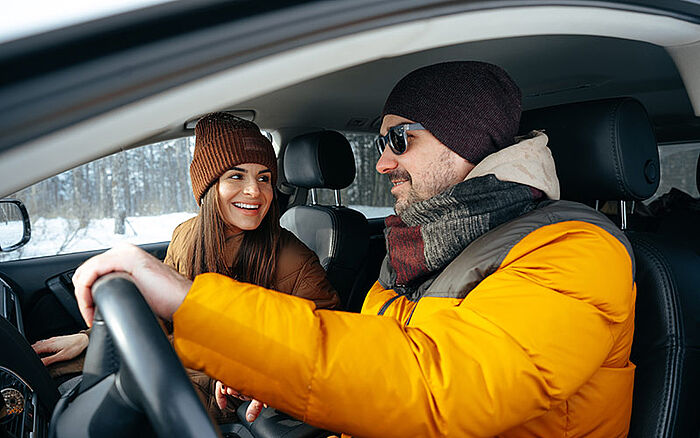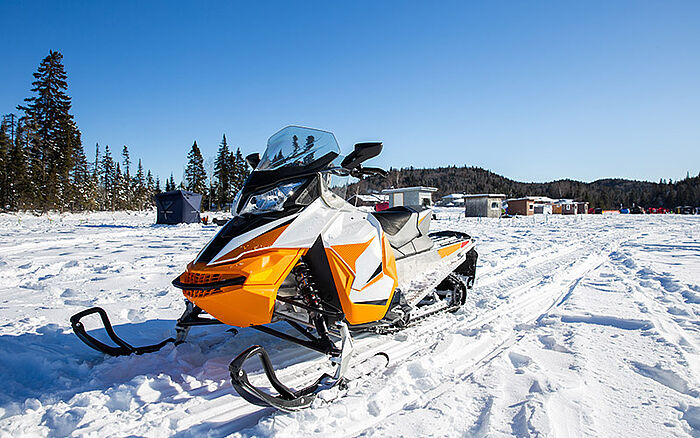
Everyday IP: Travel innovations for winter wanderlust
In days long gone, winter travel plans were limited for many by a horse-drawn sled's ability to navigate snowy conditions. Today's cold-weather adventurers face more modern challenges like flight delays, busy highways and the ever-present dilemma of fitting bulky coats into luggage.
Thanks to some clever innovations and the Intellectual Property (IP) protections backing them up, winter journeys are more likely to be limited by one's enthusiasm for braving the conditions. Take a look at some of the evolutions and inventions that help keep us moving come slush or snow.
On the road again: inventions for the where, when and how
Although our horses' chill resistance may no longer be a hindrance, modern travel still answers to Old Man Winter — which is why meteorology IP is a crucial first step in trip planning. A host of clever patents over the decades have made it possible for everyday travelers to see the future, leveraging image analysis, machine learning algorithms, cloud-tracking technology and customizable weather warnings to prevent frosty surprises. One recent invention takes our usual weather-watching to another level by combining multiple predictions to present detailed snowfall probabilities and forecast confidence levels.
But it is not just chilly conditions and icy surfaces that threaten to complicate seasonal adventures. Other travelers, too, can stand between us and our destination. Fortunately, travel IP saves the day. For urban trips, modern technology facilitates communication between traffic lights and vehicles to calculate optimal travel speeds, minimize stops and starts and enhance road flow. Some inventions monitor traffic conditions by measuring vehicle positions and velocities, while others rely on community information exchange for real-time notifications of accidents, delays and more. When heading off the beaten track, where communicating in times of trouble is vital, drivers can use navigation tools that plan routes to maintain cellular coverage.

When making a journey through difficult weather conditions, preparation is half the battle. A host of mobile applications and in-car gadgets make safe navigation easier than ever – all without losing touch with friends or emergency services.
Once the itinerary is laid out, attention turns to more tangible preparations. For airborne wayfarers, this may be as easy as grabbing a bag of in-flight snacks before heading to the boarding gate, but for those on the ground (or snow), travel IP takes on a new level of significance.
Machines of movement
Winter conditions are infamously tricky for driving: From foggy roads to the dreaded black ice, the average car can be left shaking on its wheel mounts. Other vehicles, however, thrive in such conditions, and it all begins with a few fascinating innovations.
Imagine a "motor sleigh" resting on four sled-like runners. It has no horse, instead boasting an almost ludicrously-sized front-mounted suction turbine, and can travel at speeds of up to 50 miles per hour. This is the concept behind one of the snowmobile's earliest incarnations. Using an engine patented by Romanian inventor Henri Coandă in 1910, the precarious design was presented before Grand Duke Cyril of Russia and even baptized by Orthodox priests. Lucky for all but the most thrill-seeking winter sports devotees, other snow-vehicle concepts were explored. Inventors also experimented with adapted Model T Fords, adding extra wheels, tracked belts, skis and additional seats, but the first modern layout for what we would call a snowmobile appeared in 1915, patented by Ray Muscott.
Today, these machines are built with speed in mind. Meanwhile, their larger siblings, the snowcats, have similar beginnings but a much different destination. For example, both involved adapting Model Ts – but snowcats also have tractors in their ancestry, allowing them to evolve into bigger, broader machines. Unlike snowmobiles, they have enclosed cabs and dispense with front skis, granting them added traction for greater hauling power. Nowadays, many models use tank-style steering to allow them to turn in place, and you may see them traversing seemingly impossible terrain to pave the way for skiers and snowboarders.

The snowmobile's hybrid system of propulsion and steering grants it surprising maneuverability over frozen terrain. High-performance stock models can regularly exceed speeds of 100 miles per hour, while custom designs for racing can break 200 miles per hour!
Besides their roots, these vehicles have another factor in common: They travel in roughly the same way, leveraging tracks and treads to get the job done. Their cousin – the screw-propelled vehicle, on the other hand, uses a rotating motion to move through snow. Perhaps that is because this machine's evolution traces back to boats instead of automobiles or sleighs: In 1841, a patent described a system of screws for propelling steamboats. By the end of the century, the principle of the Archimedean screw was being applied to agricultural and, later, snow vehicles. In modern screw-propelled vehicles, the rotating motion digs into the snow and may loosen it for easier travel, providing access to areas snowmobiles and snowcats may find rough.
Of course, whether you glide over the snow or twist your way through it, this kind of travel is all but guaranteed to present some chilly moments. Fortunately, generations of shivering inventors have already dreamed up ways to keep you toasty.
The smarter winter wardrobe
You have likely heard all kinds of tips for staying warm, from layering up in thermal underwear to using the latest scientifically designed fabrics. But what if your clothing could work even harder?
This is the appeal of heated apparel, which generally uses a system of thin wires sewn into the fabric to carry low electric currents from a battery. Although this idea marked a huge step forward in cold-weather comfort, it was not without its issues; inventors throughout the years had to experiment with different "heating zones" to distribute warmth evenly, waterproof membranes to protect wires from wet or snowy conditions and batteries that provided enough power without being bulky. Today's heated apparel options – which include jackets, snow boots, gloves and more – leverage everything from insulation and ventilation to microprocessors and rechargeable power banks.

Depending on a variety of factors, an underprepared person without a source of heat can experience hypothermia in just a few short hours. In extreme cold or when immersed in water, survival can be measured in minutes.
While these inventions are built to keep the cold out, others are designed to put you right in the middle of it while looking more or less cool. Take sled pants – a creative combination of, as the name suggests, pants and a sled that equips you to tackle a snowy decline whenever one presents itself. The juxtaposition with heated apparel is particularly interesting: Presented with the same issue – winter freezes – some inventors chose practicality, and others embraced entertainment.
Another factor these inventions have in common is their contextual assumption that modern amenities are never far away. Heated clothing, while excellent for a few hours on a snowmobile, demands regular trips back to the reassurance of an electric battery charger; similarly, sled pants are not a functional choice for anything other than sledding. What happens if winter travel takes you too far away from such cozy conveniences?
Surviving the snow
Much winter IP is about making the best of the season, but it is even more important to prepare for its worst, and creative patents are ready to save the day (sometimes literally). Inventions like a straw that purifies water with every sip, an insulating "space blanket" developed by NASA and snack food products with extended shelf lives can address basic needs in case of emergencies, such as a vehicle being stranded in the snow. Travelers can also grab first aid kits, some with compartments for different medical emergencies and others made specifically for children.
Whether for work or pleasure, the way we get around during winter owes a great deal to more than a century's worth of inventions and the IP rights that protect them. Contact the Dennemeyer team for the coolest support in drafting, filing and defending patents.
Filed in

Discover a sleigh-load of IP protections behind some of the Christmas season's favorite decorations.

Embark on a tour of the inventions and IP protections that turn everyday settings into high-tech destinations.



